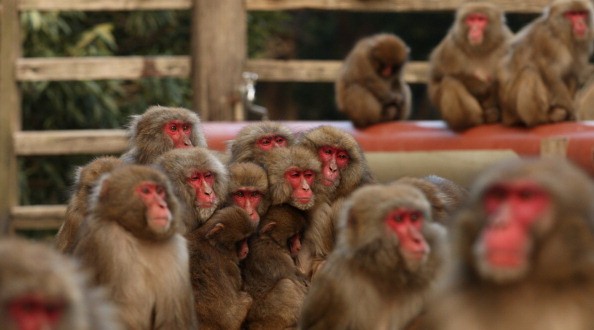A fascinating new study seems to reveal that monkeys expand the size of their social circles when strife or resource scarcity sets in. Scientists observed the population of rhesus macaque in Puerto Rico on Cayo Santiago in the aftermath of Hurricane Maria that happened in 2017 and observed every individual rise the number of grooming activities, and also the number of other monkeys groomed, after the disaster.

Habitats of Macaque Monkeys Damaged by Hurricane Maria
By the numbers, there was more than a 50% increased chance that the macaque monkeys would be seen grooming after the occurrence of the hurricane when weighed to before, and they were four times more likely to be sitting nearby another monkey.
Rhesus macaques are more related closely to humans than and other monkeys, and the outcomes say a little about how humans stay together during disasters.
Damaging about 63% of the island's green vegetation, Hurricane Maria damaged the infrastructure of usually deeply protective and competitive primate domain. Resources that were once abundant enough to be protected by small troupes of monkeys were now scarce, and instead of changing into the monkey-form of the Mad Max: Road Warrior wasteland, groups enlarged their social circles.
The increase in social attachments was weighed by the grooming habits of the monkey, and also sitting down within two meters of one another - metrics which could be compared with close friends having coffee or lunch, the lead author of the study explains. The most usual cross-over into other groups was friends of friends.
Social Buffering
The outcomes suit squarely within the "Social Buffering" theory that says social animals will surround one another with more members belonging to their species during or after hard times. This was true for macaques that are extroverted, but even more so for isolated, introverted ones, who boost their social bonding much more than the extroverts.
They also discovered that there was no extra effort added to make the bonds stronger between kin, or with the most powerful members in the group, only efforts to boost the size of the social network of each monkey.
The scientists postulate that the nature and specifics of the discovery propose that by increasing their social network, they are getting means of entry to resources known or handled by another monkey, and the more monkeys, the more resources in the future.
It's a hopeful image - monkeys coming together during a crisis, something we should think about the next time crisis attacks our shores.

2017 Hurricane Maria in Puerto Rico
Climate change is boosting the frequency and intensity of disasters that are related to weather like wildfires, hurricanes, droughts, and floods. Understanding vulnerability and resilience to these stressors and their aftermath that are intense could uncover adaptations to extreme environmental change.
Puerto Rico experienced its worst natural disaster in 2017, Hurricane Maria, which led to the death of 3,000 people and caused a mental health crisis. Cayo Santiago island, shelter to a population of rhesus macaques (Macaca mulatta), was destroyed by the same storm.
Related Articles : Netflix for Monkeys: Scientists Streams Art Videos to Primates that Enjoy Watching Wriggling Worms
For more news, updates about monkeys and similar topics don't forget to follow Nature World News!
© 2025 NatureWorldNews.com All rights reserved. Do not reproduce without permission.





